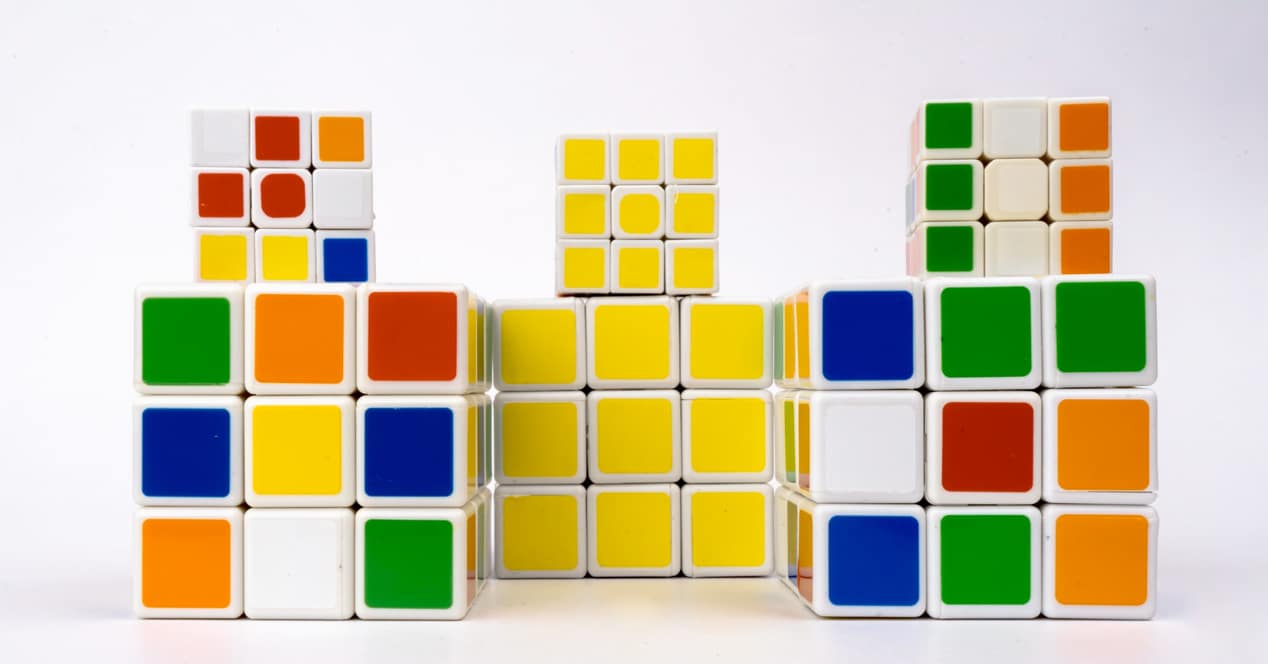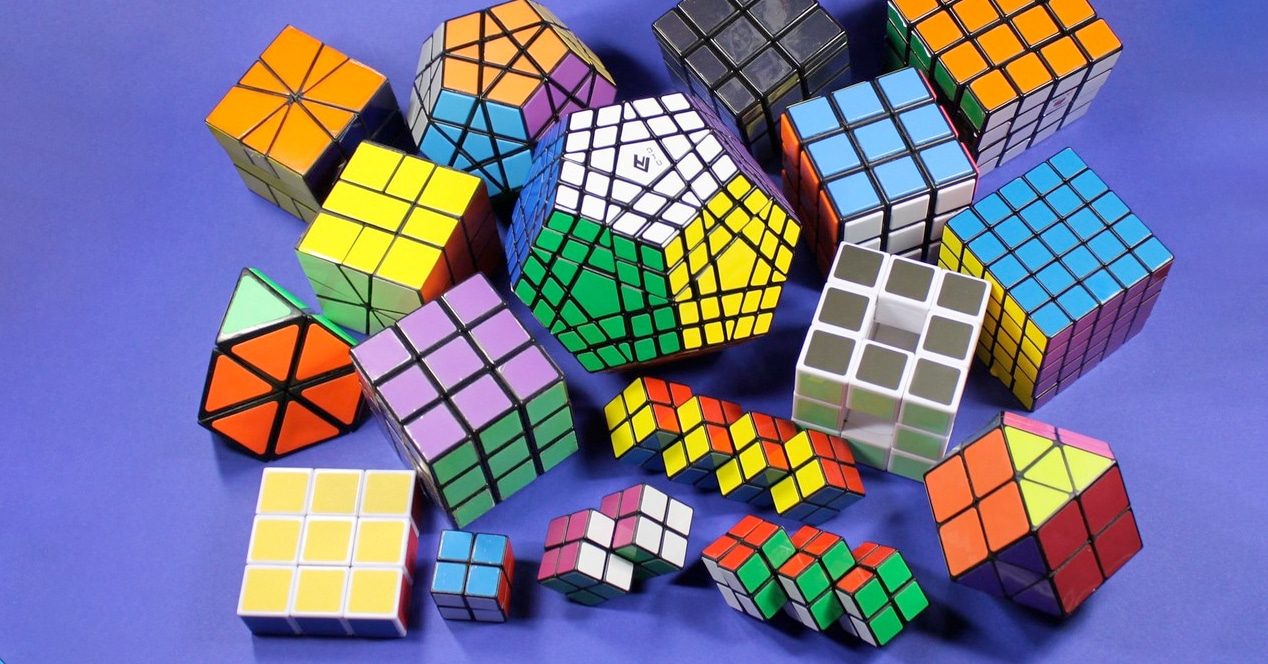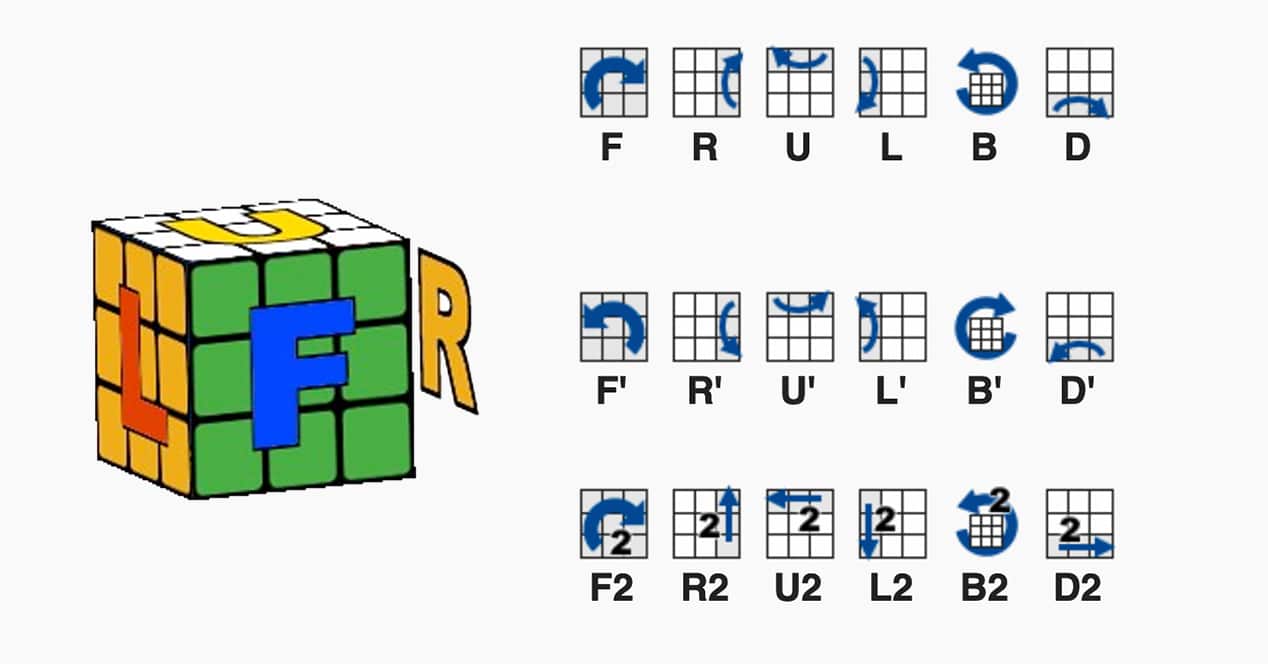
Some solve the puzzle with their eyes closed. And others get a headache just looking at it. He Rubik's Cube It is a challenge that many people take for granted, but that, like everything, has its methodology and practically anyone can solve it. If this color puzzle has always attracted your attention and you are curious about how it is solved, today we will tell you all about it. what it is, how it came about and how to solve the Rubik's Cube.
Origin of Rubik's Cube

The most famous puzzle in the world was designed by Ernő Rubik, a Hungarian professor of architecture at the year 1974 . It was licensed to Ideal Toy Company and in 1980 had such tree, which was considered Best Game of the Year. The cube was born as an experiment by Ernő so that his students could understand structural problems in three-dimensional objects. However, while mixing the cube, he realized that I had accidentally invented a puzzle.
Its beginnings were not easy. Because of the laws of Hungary, Rubik was about to not be able to patent the toy. Later, he was sued by Larry Nichols, who years before had created a similar puzzle, but 2x2x2, in Canada. On the other hand, and almost at the same time, an engineer in Tokyo created a very similar game, considering it an independent reinvention.
Parts, movements and notation in the Rubik's Cube
When we refer to the Rubik's Cube, we are talking about a 6 sided cube and a 3x3x3 matrix. The colors of the faces are indifferent, although the solution is usually started with the white face.
The cube can be divided into the following shares:
- Centro: It is the only piece that cannot be moved from the cube. There are 6 in total.
- edges: share two colors. There are 12 in all.
- verticesThey are made up of three colors. There are 8 in all.

There are also other cubes that differ from the original Rubik's, but have the same name. They are the following:
- 2x2x2: It has no center or edges. It can be solved like 3x3x3 by imagining the color of the faces and applying the algorithms used to move vertices.
- 4x4x4: The center is made up of four pieces and each edge is made up of two pieces.
- 5x5x5: The center is made up of nine pieces and each edge is made up of three pieces.
In most of these cubes, the method is usually transform the puzzle into something similar to a 3x3x3 and solve with a method for one of these cubes. However, in some cases it may appearr specific parity problems, which must be solved with very specific algorithms, particular to each cube model in question.
Terminology

Rubik's Cube has its own notation. For this, it is always considered that we have the cube in front of us, and the parts are named as follows:
- F: front layer
- L: left layer
- R: right layer
- U: top layer
- B: back layer
- D: bottom layer
When the movement is clockwise, the movement is written with a single letter. When the movement is to be carried out in the opposite direction, it is written with an apostrophe. In the same way, if the letter is followed by a 2, 2 movements will be made in a row:
- F: movement of the front layer clockwise
- F ': movement of the front layer counterclockwise
- F2: double movement of the front layer clockwise
However, each method of solving the cube can be accompanied by its own notation.
How to solve the Rubik's Cube

There are several methods to solve the Rubik's Cube. If you're just looking to solve the cube for fun, it's best to stick with the method for beginners. On the other hand, if you end up stinging and want to go deeper, the advanced method it will keep you busy for many weeks.
Whether you choose one method or another, the cube is solved by applying a series of mathematical algorithms. The first steps Both in one method and in the other, they are made by moving the pieces exactly just like a puzzle until a complete face is formed and the central layer well located. From there, in the two methods we will have to apply a series of algorithms to solve the cube. Each step has its own algorithm, which we could define as a sequence of movements where the 'input' will not matter, since the output will be the same.
Method for Beginners
The basic method consists of 7 steps. Before you start, you should have figured out how to move the pieces around the cube.
- Locate the white face (the one with the white center) and form a White cross around. The secondary color of the edge must match the center piece of the other face of the cube.
- carry the white edges to their place. There are three possible cases, which are solved with the following algorithms:
- White color on the right: R' D' R
- White color left: FD F'
- White color on the base: FL D2 L' F'
- Complete the second layer correctly locating the edge. Place the edge on the face where the part fits correctly and execute the following algorithm:
- If the turn is to the left: U' L' ULF U' F'
- If the turn is to the right: UR U' R' U' F' UF
- Now it's time to make one yellow cross, the same as at the beginning, but without spoiling everything we have done. It does not have to be aligned with the color of the other face. We will do that in step 5. To rotate the edges, we will do the FRU R' U' F' algorithm.
- We locate the yellow pieces in its corresponding place with respect to the central color of the other faces. This step must be repeated until everything is well aligned: RU R' UR U2 R' U.
- Move the vertices to their place. It doesn't matter if the orientation is correct or not. The algorithm this time is as follows: UR U' L' U R' U' L
- guide and resolve. The last step is the easiest of all. It consists of repeating the R' D' RD algorithm until all the corners are well oriented. Once that is done, you will have to move the faces horizontally to solve the cube.
Advanced Method or Friedrich Method (CFOP)

The previous method is interesting to solve the cube in approximately 30 seconds or a minute if you are very clever. However, the advanced method allows solve the cube in a few seconds. It is named after its creator, Jessica Friedrich. The method consists of 120 algorithms in total, so you have to have a long memory and spend many hours on the cube to learn the technique. However, there is an alternative version of the full Friedrich method, which is the Friedrich Reduced. In this case, they are 49 algorithms, but you will have to do many more steps.
Rubik's Cube Records
If you find it difficult to solve the Rubik's Cube, it will seem even crazier that some are able to solve it with their eyes closed, with their feet or even with one hand. These are the current records:
- Yusheng Du (CH) – 3,47s – Two-handed record (2021)
- Max Park (USA) – 6,82s – One-handed record (2019)
- Sebastiano Tronto (IT) – 16 – Record with fewer moves (2019)
- Tommy Cherry (USA) – 14,67s – Blindly (2021)
- Graham Siggins (USA) – 59/60 59:46 – blind multi (2019)
- Que Jianyu (CH) 5 min, 2.43s – Multi 3 with juggling (2020)